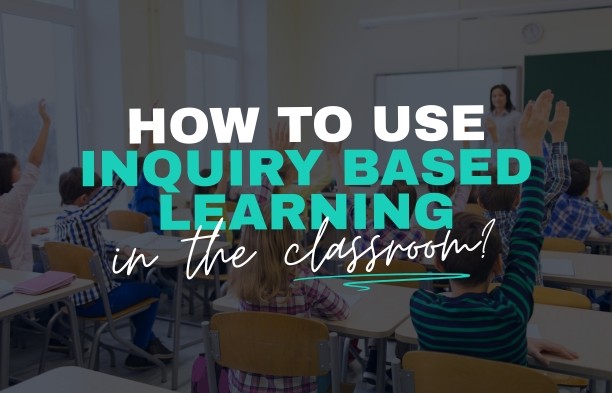
Encouraging inquiry in the classroom transforms education from a passive reception of facts into an active, dynamic exploration of knowledge. It shifts the teacher’s role from a mere dispenser of information to a facilitator of discovery, empowering students to ask questions, investigate, and construct their own understanding. This approach not only deepens comprehension but also cultivates critical thinking, problem-solving skills, and a lifelong love of learning—qualities far more valuable than rote memorization in an ever-changing world. Building a classroom culture where curiosity is celebrated and questions are pathways to deeper insights is fundamental to fostering genuine inquiry.
### Cultivating a Question-Friendly Environment
The foundation of encouraging inquiry lies in creating a **safe and stimulating environment** where students feel comfortable asking questions without fear of judgment. This means consciously validating every question, regardless of its perceived simplicity or complexity. Teachers can model this behavior by asking their own genuine questions, demonstrating that intellectual curiosity is a continuous journey. Simple phrases like, “That’s a fascinating question, let’s explore it,” or “I hadn’t thought of it that way, tell me more,” can dramatically open up the space for student-initiated inquiry. The physical classroom setup can also play a role; flexible seating arrangements, access to resources, and visible displays of inquiry-based projects can all signal that the space is designed for exploration.
Beyond just permitting questions, actively **soliciting and celebrating questions** is crucial. Teachers can start lessons by asking students what they already know or what they are curious about regarding a topic. A “parking lot” or “question wall” where students can anonymously post their queries throughout the unit can be an effective way to capture diverse curiosities and address them collectively. When a student poses a particularly insightful question, highlighting it and discussing its implications not only validates the student but also inspires others to think more deeply. This consistent reinforcement helps embed the idea that questioning is not a sign of confusion, but a hallmark of genuine intellectual engagement.
—
### Designing Open-Ended Learning Experiences
To truly foster inquiry, the learning experiences themselves must be designed with an **open-ended structure** that invites investigation rather than demanding a single correct answer. Instead of simply presenting information, teachers can introduce concepts through perplexing scenarios, real-world problems, or intriguing phenomena. For instance, in a science class, rather than directly explaining the principles of buoyancy, a teacher might present students with various objects and a tank of water, challenging them to predict and then investigate why some float and others sink. This hands-on, problem-based approach immediately sparks curiosity and sets the stage for student-led exploration.
Project-based learning (PBL) is an exemplary framework for cultivating inquiry. In PBL, students work on an extended project that solves a real-world problem or answers a complex question. The teacher acts as a guide, providing resources and prompting critical thinking, but the students drive the investigative process. This might involve researching a local environmental issue, designing a sustainable community solution, or developing a business plan for a new product. The very nature of PBL demands students to ask “why,” “how,” and “what if,” as they navigate challenges and construct their own knowledge through iterative cycles of questioning, research, experimentation, and presentation.
—
### Providing Tools and Guidance for Investigation
Encouraging inquiry isn’t just about fostering the desire to ask questions; it’s also about equipping students with the **skills and tools to find answers**. This includes teaching them effective research strategies, how to evaluate sources for credibility, and methods for organizing information. In an age of abundant information, guiding students to discern reliable sources from misinformation is a critical inquiry skill. Teachers can integrate lessons on digital literacy, source evaluation, and proper citation, turning students into discerning researchers rather than passive consumers of information.
Moreover, guiding students through the **process of scientific inquiry or design thinking** can provide a structured framework for their investigations. This involves helping them formulate testable hypotheses, design experiments, collect and analyze data, and draw evidence-based conclusions. For subjects beyond science, this translates to developing strong argumentative skills, constructing persuasive essays based on evidence, or creating compelling presentations informed by thorough research. Providing graphic organizers, rubrics for self-assessment, and opportunities for peer feedback during the inquiry process can also empower students to take ownership of their learning and refine their investigative approaches. The role of the teacher here is not to give answers, but to provide the compass and map for students to navigate their own learning expedition.
—
### Reflecting and Sharing Discoveries
The inquiry cycle is incomplete without opportunities for **reflection and sharing of discoveries**. Once students have investigated a question and arrived at their conclusions, providing platforms for them to articulate their findings is crucial. This could involve presenting their research to classmates, creating a visual display, writing a reflective essay on their learning journey, or even teaching a concept to their peers. These sharing opportunities not only solidify their understanding but also allow them to receive feedback, refine their arguments, and learn from the diverse perspectives of others.
Furthermore, encouraging **metacognition**—thinking about one’s own thinking—is vital. Teachers can prompt students with questions like, “What new questions did your investigation raise?” or “How did your initial understanding change after your research?” This helps students become aware of their learning process, fostering a continuous cycle of inquiry. By celebrating the journey of discovery, rather than just the final answer, teachers instill a deeper appreciation for intellectual exploration. The goal is to cultivate students who, having mastered the art of asking meaningful questions and seeking their own answers, are forever learners, equipped to navigate the complexities of the world around them.